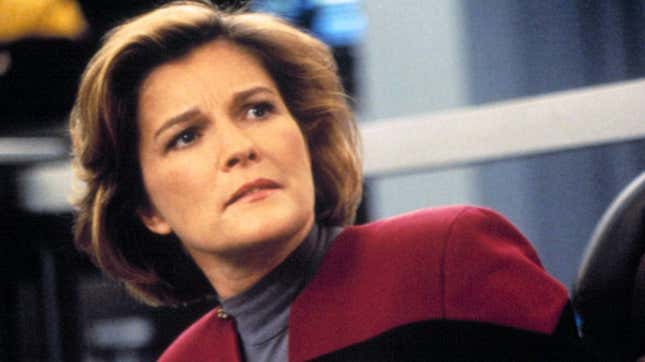
If the writers had had their way.
Often considered the highlight of the series, the “Year of Hell” two-parter in Star Trek: Voyager’s fourth season injects messy timeline shenanigans and high drama into the series, which typically focused on less serialized, less intense stories than its immediate forebear, Deep Space Nine. According to Bryan Fuller, who talked about working on Voyager in a recent episode of the Inglorious Treksperts podcast, the initial concept was for the story in these two episodes to comprise a full season arc.
“The ‘Year of Hell’ and the behind-the-scenes drama not only to craft episode, but that season, was fascinating because we wanted ‘Year of Hell’ to last the entire season,” Fuller said (as transcribed by Trek Movie). “We wanted to see Voyager get its ass kicked every episode and through that season was going to be marbled the story of Annorax and the time ship that was changing things. So, we would go back to it every once in a while to remind the audience that is the larger story. But [it was rejected] because Deep Space Nine made [Voyager co-creator and executive producer] Rick Berman allergic to serialized storytelling, violently so.”
While Berman would eventually nix the idea, Fuller said that it was animating, one of the most exciting concepts to move through the Voyager writer’s room.
“We are really going to be on the outskirts of the galaxy and we are going to be fighting enemies that are kicking us when we are down. The crew is going to have to separate and we are going to be following episodes that are going to deal with people on shuttlecrafts with escape pods that are electrically buoyed together,” Fuller explained. “There would be an episode where you never saw Janeway and never saw Voyager because you are with the people who are on the escape pods trying to find a new source of power or safety. It was like creative crack for the writers’ room, because all of a sudden there were so many opportunities.”
That idea remained animating right up until it was pitched... and subsequently rejected.
“I remember [showrunner Brannon Baga] going over to Rick’s office with all of this enthusiasm and coming back broken and his head hanging low and having to break it to the writing staff. We all felt like we were doing it, we are making great Star Trek. For him to come back and say we can’t and we can only do two episodes as opposed to twenty-two, it was heartbreaking,” Fuller said.
That tension, between writerly ambition and Berman’s strong opinions, was a significant source of the unique and not always successful vibe of Voyager, according to Fuller. While the show did find its footing, it’s disappointing to know that such a neat arc could have been a whole lot more.
For more, make sure you’re following us on our Instagram @io9dotcom.